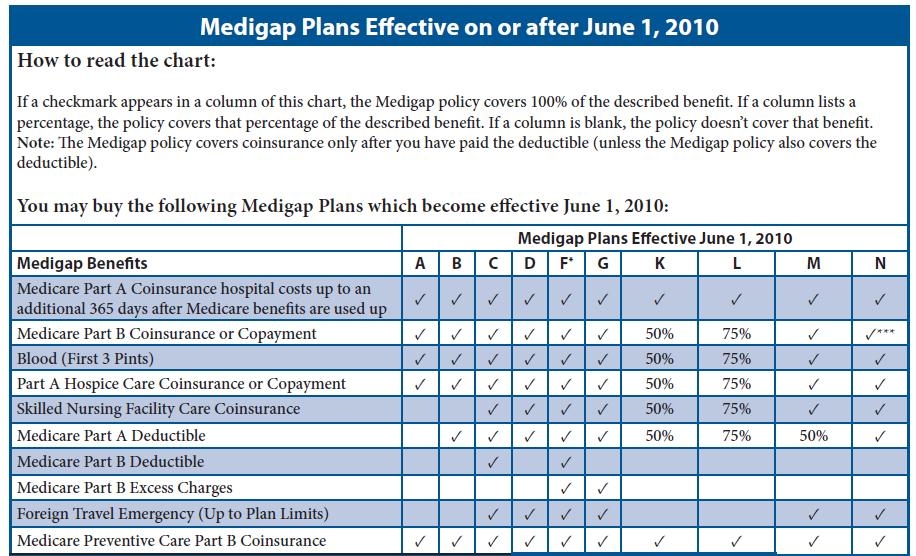
by Russell Noga | Updated September 27th, 2023
Navigating the world of Medicare Supplement plans can be overwhelming. With so many options available, how can you determine which plan is the best fit for your needs?
In this comprehensive guide, we will compare two of the most popular Medicare Supplement plans, Plan G and Plan N, to help you make an informed decision based on your individual healthcare needs, budget, and preferences.
So, let’s dive in and uncover the differences between these two plans and help you decide if Medicare Plan G or N is better for you!
Short Summary
- Comparing Medicare Plan G and Plan N requires consideration of coverage, premiums, out-of-pocket expenses, and healthcare needs.
- Evaluating budget constraints is important when selecting a plan as well as the frequency of doctor visits.
- Understanding Medigap Open Enrollment Periods and Guaranteed Issue Rights can help make an informed decision between Plans G & N.
Compare 2024 Plans & Rates
Enter Zip Code
Understanding Medicare Supplement Plans
Medicare Supplement Plans, commonly referred to as Medigap plans, are designed to provide coverage for healthcare costs that are not included in Original Medicare. Medigap Plan F, Plan G, and Plan N are the most widely used Medicare Supplement plans.
They provide important coverage to help pay for expenses that aren’t covered by original Medicare. These plans are also known as Medicare Supplement Insurance Plans, with each one being a specific Medicare Supplement Insurance Plan.
While Plan F has been a popular choice in the past, Plan G and Plan N have gained popularity due to their comprehensive coverage and affordability.
To choose the best plan for your needs, it’s important to compare Medicare Supplement Plans based on coverage, costs, and other factors.
But first, let’s understand the role of Medigap plans and how they are standardized.
The Role of Medigap Plans
Medigap plans serve to supplement Medicare Parts A and B, thereby affording beneficiaries additional benefits and reduced out-of-pocket expenses.
These plans provide additional benefits on top of Original Medicare by covering the deductibles, copays, and coinsurance that Medicare considers to be the financial responsibility of the beneficiary.
In summary, Medigap plans are a crucial component of Medicare coverage, offering supplementary advantages and reducing out-of-pocket costs for recipients.
Now that we understand their role, let’s discuss the standardization of Medicare Supplement plans.
Standardization of Medicare Supplement Plans
Medigap plans are federally standardized, indicating that the basic set of benefits provided by a Medigap plan in one state will be equivalent to the basic set of benefits in another state.
This standardization ensures that beneficiaries receive consistent coverage, regardless of their location.
Medicare Plan G and Plan N are widely favored due to their comprehensive coverage and affordability.
With an understanding of the standardization of Medigap plans, let’s delve into the comparison of Plan G and Plan N.

Comparing Medicare Plan G and Plan N
When comparing Medicare Plan G and Plan N, it’s important to consider coverage differences, premium costs, and out-of-pocket expenses.
This comparison will help you make an informed decision based on your individual healthcare needs and financial constraints.
Coverage Differences
Medicare Plan G offers more comprehensive coverage than Plan N but at a higher monthly premium.
This means that Plan G covers more healthcare services and expenses, such as Medicare Part B excess charges, which can provide peace of mind for beneficiaries who require more frequent medical attention.
On the other hand, Medigap Plan N provides slightly less coverage compared to Plan G but comes with a lower monthly premium.
This makes Plan N an attractive option for those who have fewer healthcare needs and are willing to pay copays for certain doctor visits and emergency room visits.
Premium Costs
 The typical monthly premium for Medigap Plan G is between $120-$220. While offering more comprehensive coverage, Plan G’s higher premium may not be suitable for all beneficiaries, especially those on a tight budget.
The typical monthly premium for Medigap Plan G is between $120-$220. While offering more comprehensive coverage, Plan G’s higher premium may not be suitable for all beneficiaries, especially those on a tight budget.
In contrast, Plan N has a comparatively lower monthly premium. This makes Plan N an appealing choice for those who are looking to save money on premiums without sacrificing too much coverage.
However, it’s important to note that with Plan N, you may be required to pay copays for doctor visits and emergency room visits.
Out-of-Pocket Expenses
The out-of-pocket expenses for Plan G and Plan N mainly differ in regard to Medicare Part B copayments and excess charges.
Plan G provides 100% of all Medicare-covered expenses after the Part B deductible for the year has been satisfied. Plan N, on the other hand, necessitates a few extra out-of-pocket expenses, such as a $20 copayment for each doctor’s visit, and a $50 copayment for emergency room visits that do not result in inpatient hospital stays.
These differences in out-of-pocket expenses should be considered when deciding between Plan G and Plan N, as they can significantly impact your overall healthcare costs.
Compare Medicare Plans & Rates in Your Area
Evaluating Your Healthcare Needs
To determine which plan is best suited for your needs, it’s essential to assess your healthcare requirements, such as the frequency of doctor visits and budget constraints.
By understanding your personal needs and financial situation, you can make an informed decision on whether Plan G or Plan N is the right choice for you.
Plan G and Plan N are two of the most popular Medicare supplement plans. Both plans offer coverage, but it’s important to compare Medicare supplement plan options like Plan G and Plan N to find the best fit for your needs.
Frequency of Doctor Visits
When selecting a Medicare Supplement plan, consider the following factors:
- How often do you visit the doctor?
- Whether you’re willing to pay copays for each visit under Plan N
- If you visit the doctor frequently, the comprehensive coverage offered by Plan G may be more cost-effective, as it covers more services and requires fewer out-of-pocket expenses.
 On the other hand, if you seldom visit the doctor, Medigap Plan N may be a more suitable option, as it has lower monthly premiums and out-of-pocket costs.
On the other hand, if you seldom visit the doctor, Medigap Plan N may be a more suitable option, as it has lower monthly premiums and out-of-pocket costs.
However, keep in mind that you may be required to pay copays for certain office visits, including doctor visits, under Plan N.
Budget Constraints
Evaluate your budget and determine if you can afford the higher monthly premium of Plan G for more comprehensive coverage.
If you have a limited budget, Plan N may be a more attractive option due to its lower monthly premiums and out-of-pocket costs.
It’s crucial to balance your healthcare needs with your financial constraints when selecting a Medicare Supplement plan.
By considering both your medical requirements and budget, you can make an informed decision on whether Medicare Supplement Plan G or Plan N is the right choice for you.
Enrollment Timing and Options
Understanding the best time to enroll in a Medicare Supplement plan and the options available to you is an essential part of making an informed decision.
There are specific periods and circumstances that can affect your eligibility and the cost of your chosen plan.
For example, if you are already enrolled in Medicare Part A and Part B, you may be considered one of the many Medicare beneficiaries.
The 6-month Medigap Open Enrollment Period
The Medigap Open Enrollment Period is a 6-month period commencing on the first day of the month in which an individual attains the age of 65 and has Medicare Part B.
It is considered the most appropriate time to purchase a Medigap policy as insurance companies are prohibited from denying coverage or charging higher premiums based on the individual’s health condition.
Taking advantage of the Medigap Open Enrollment Period can save you money and ensure that you have access to the coverage you need, regardless of your health status.
Guaranteed Issue Rights
If you miss the Medigap Open Enrollment Period, there are other options available to you. Guaranteed Issue Rights enable individuals to enroll in a Medigap plan under specific conditions, even if the Open Enrollment Period has been missed.
These rights ensure that insurance companies must offer a Medigap policy to an individual at the most advantageous rate, regardless of their health status or medical underwriting.
Anyone who is coming off employer-sponsored group health insurance typically has a guaranteed issue right period, though this depends on the size of the employer and the type of coverage they offer.
Call us today for help if you think you might be in a guaranteed issue period.
The Impact of Medicare Providers on Your Plan Choice
The choice between Medicare Plan G and Plan N can also be influenced by the Medicare providers you visit. It’s important to consider the impact of participating and non-participating providers on your plan choice, as this can affect your overall healthcare costs and the level of coverage you receive.
Participating Providers
Most doctors accept Medicare assignments and only bill Medicare, making it simpler for beneficiaries with Plan G or Plan N. This means no Medicare Part B excess charges can be billed.
This means that you are less likely to face unexpected medical bills, as participating providers have agreed to accept the Medicare-approved amount for healthcare services.
When choosing between Plan G and Plan N, it’s essential to consider the participating providers in your area and how their acceptance of Medicare assignment can impact your healthcare costs and coverage.
Non-Participating Providers
Non-participating providers can charge excess fees, which are covered by Plan G but not by Plan N, potentially leading to unexpected medical bills.
Medicare Part B excess charges are known to average very low amounts, often under $20. It is estimated that less than 1% of all health claims contain a Medicare Part B excess charge.
If you frequently visit non-participating providers, you may want to opt for Plan G, which covers these excess charges and offers more comprehensive coverage.
Before deciding between Medigap Plan G and Plan N, it’s crucial to consider the impact of non-participating providers on your healthcare costs and coverage, as this can significantly impact your overall satisfaction with your chosen plan.
Real-Life Scenarios: Comparing Medicare Plan G and Plan N
To further illustrate the differences between Plan G and Plan N, let’s examine some real-life scenarios.
For example, suppose you visit the doctor frequently and have a limited budget. In this case, Plan G may be the more suitable selection as it covers more services and requires fewer out-of-pocket expenses.
On the other hand, if you are healthy and wish to save money on premiums, Plan N may be the more suitable selection, as it has lower premiums and out-of-pocket costs.
By considering these real-life scenarios, you can gain a better understanding of the differences between Medicare Plan G and Plan N, and make an informed decision based on your individual healthcare needs and financial situation.

Summary
In conclusion, choosing between Medicare Supplement Plans G and N is an important decision that requires a thorough understanding of the differences in coverage, costs, and out-of-pocket expenses.
By evaluating your healthcare needs, budget constraints, enrollment timing, and the impact of participating and non-participating providers, you can make an informed decision that best suits your individual circumstances. Remember, the right Medicare Supplement plan can make all the difference in your healthcare experience and overall well-being.
Compare 2024 Plans & Rates
Enter Zip Code
Frequently Asked Questions
What is the advantage of Medicare Plan G over Plan N?
Medigap Plan G offers greater coverage than Plan N, as it does not include copays for certain medical office and emergency department visits, whereas Plan N does.
Additionally, it covers excess charges which Plan N does not. With both plans you are required to pay the annual Medicare Part B deductible.
What are the disadvantages of Medicare Plan N?
Medicare Plan N has the disadvantage of not providing coverage for out-of-pocket costs, such as copays for doctors and emergency room visits. Additionally, it does not cover certain services, like Medicare Part B excess charges though these are rare.
When is the best time to enroll in a Medigap plan?
The best time to enroll in a Medigap plan is during the 6-month Medigap Open Enrollment Period, which begins on the first day of the month you turn 65 and sign up for Medicare Part B.
This period lasts for six months and is the best time to enroll in a Medigap plan because you are guaranteed to be accepted, regardless of your health status.
If you are currently enrolled in a Medicare Supplement plan, you may apply to switch to a different Medigap plan at any time during the year. Medical underwriting will likely apply.
How can I determine if a Medicare provider is participating or non-participating?
You can verify if a Medicare provider is participating or non-participating by visiting Medicare.gov to check their assignment acceptance and additional fees.
What should I consider when evaluating my healthcare needs and budget constraints?
When evaluating your healthcare needs and budget constraints, consider the frequency of doctor visits, your budget, and the coverage provided by each plan to make an informed decision.
Call us today for help.
How Do Medicare Plan G and Plan N Differ in Cost-Sharing?
The main difference between Plan G and Plan N is cost-sharing. Plan G covers most out-of-pocket costs, including the Medicare Part B deductible. Medigap Plan N, on the other hand, requires beneficiaries to pay some copayments for doctor’s office visits and emergency room visits, as well as the Part B deductible.
Which Plan Offers More Comprehensive Coverage: Plan G or N?
Medicare Plan G typically offers more comprehensive coverage because it covers the Part B deductible, which Plan N does not. With Plan G, you generally have fewer out-of-pocket costs for medical services.
How Do the Premiums Compare Between Medicare Plan G and Plan N?
The premiums for Medicare Plan G are higher than those for Plan N because of the more extensive coverage. However, Medicare Plan N may have lower premiums, making it a more cost-effective option for some beneficiaries.
Do Both Plans Cover Excess Charges?
Only Medicare Plan G covers excess charges, which are the additional costs that a healthcare provider may charge above the Medicare-approved amount. These excess charges can occur if you see a doctor who doesn’t accept Medicare assignment. Medicare Plan N does not cover these, though they are quite rare and typically average under $20 per charge.
Can I See Any Doctor with These Plans?
Yes, both Plan G and Plan N allow you to see any doctor or healthcare provider who accepts Medicare patients. There are no network restrictions.
Speak to the Professionals about Medigap Plans and Original Medicare Deductibles
If you find understanding the deductibles and benefits involved with Original Medicare and Medigap Plans challenging, you’re not alone. Call our team at 1-888-891-0229 for a free consultation or complete the contact form on this site, and an expert will call you back at a convenient time.
We have decades of experience advising our clients on the complexities of Medicare and Medigap plans, the benefits, and deductibles. We’ll ensure you get the best rate for Plan G in your state and advice you can trust.

Russell Noga is the CEO and Medicare editor of Medisupps.com. His 15 years of experience in the Medicare insurance market includes being a licensed Medicare insurance broker in all 50 states. He is frequently featured as a featured as a keynote Medicare event speaker, has authored hundreds of Medicare content pages, and hosts the very popular Medisupps.com Medicare Youtube channel. His expertise includes Medicare, Medigap insurance, Medicare Advantage plans, and Medicare Part D.



